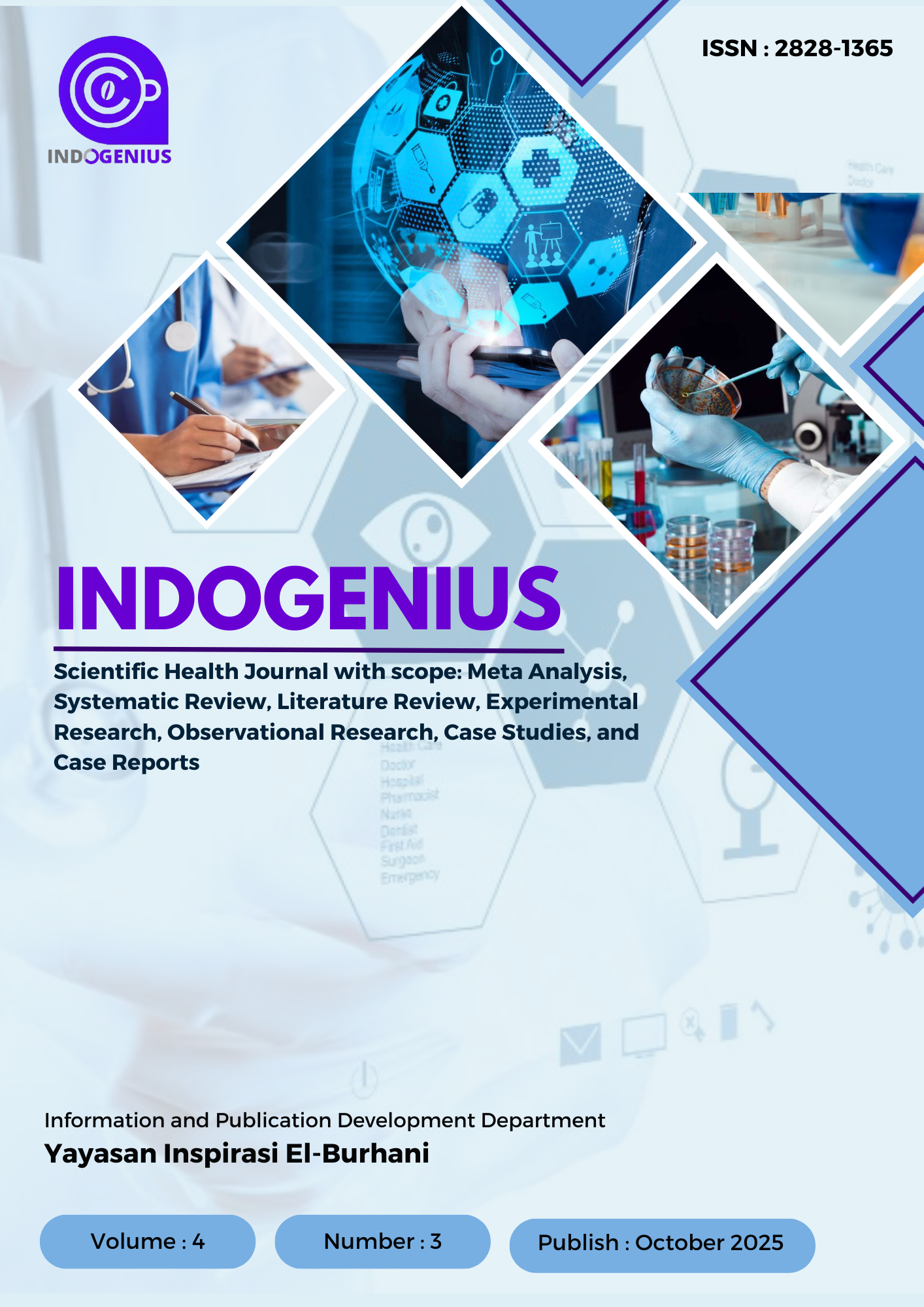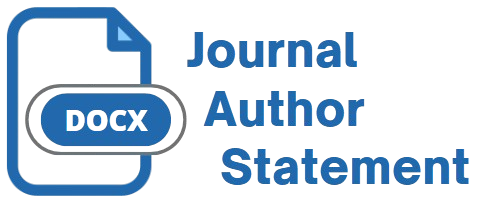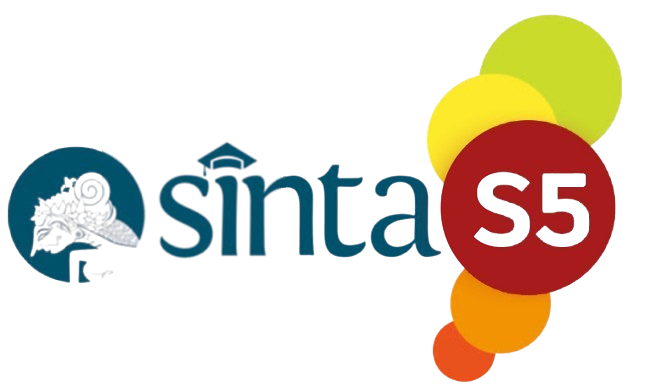The Application of Autogenic Relaxation Techniques in Elderly People with Type II Diabetes Mellitus to Stabilize Blood Glucose Levels
DOI:
https://doi.org/10.56359/igj.v4i3.611Keywords:
Autogenic Relaxation, Blood Glucose Levels, Type II Diabetes MellitusAbstract
Background & Objective: Diabetes (DM) is a type of metabolic disorder caused by abnormal insulin production, insulin performance, or a combination of both, characterized by elevated blood sugar levels. The objective of this study was to determine the effects of autogenic relaxation techniques on elderly people with type 2 diabetes.
Method: This study employed a single-group pretest-posttest design in a quasi-experimental setting. The study included 15 participants with diabetes mellitus, selected using purposive sampling. The case study was conducted from April 25 to 27, 2025, over three sessions of 15 minutes each. Blood sugar levels were measured using a glucometer before and after the intervention. Data analysis was performed using a paired t-test to compare average blood sugar levels before and after the autogenic relaxation technique.
Result: Before and after the intervention, the average blood sugar levels were 257 mg/dl and 234 mg/dl, respectively. The average age of the respondents was 70 years, and they had been living with diabetes mellitus for more than five years. Before and after the autogenic relaxation intervention, blood sugar levels changed with a p-value of 0.000 based on the paired t-test.
Conclusion: Autogenic relaxation can lower blood glucose levels.
Downloads
References
Abdul, R. H., Kota, M., Studi, P., Ners, P., Kedokteran, F., Jambi, U., Letjen, J., No, S., Pura, T., & Jambi, K. (2024). Penerapan Terapi Relaksasi Autogenik Untuk Menurunkan Kadar Glukosa Darah Pada Pasien Diabetes Mellitus ( DM ) Tipe 2 disertai kelainan metabolik umumnya disebabkan karena adanya gangguan hormon dan Pada tahun 2021 International Diabetes Federation mengun. 8(3), 312–321.
Aji Kurniawan, A., Wahyu Wedhawati, M., Triani, M., Noviyanti Agus Imam, D., Laksitasari, A., Ilmu Penyakit Mulut, B., Gigi, K., Jenderal Soedirman Purwokerto, U., Tengah, J., Pendidikan Profesi Kedokteran Gigi, P., Jenderal Soedirman, U., & Tengah Abstrak, J. (2020). Laporan Kasus: Xerostomia pada Penderita Diabetes Mellitus Tipe 2 (Case Report: Xerostomia in Type 2 Diabetes Mellitus Patients). Jurnal Kedokteran Gigi , 17(1), 33–36.
Aminuddin, A., Yenny Sima, Nurril Cholifatul Izza, Nur Syamsi Norma Lalla, & Darmi Arda. (2023). Edukasi Kesehatan Tentang Penyakit Diabetes Melitus bagi Masyarakat. Abdimas Polsaka, 7–12. https://doi.org/10.35816/abdimaspolsaka.v2i1.25
Aprilani, S., & Warsono, W. (2023). Terapi Relaksasi Autogenik Dapat Penurunan Kadar Gula Darah Pada Pasien Diabetes Melitus Tipe 2.
Ardiansyah, F., Harison, N., Shinta, S., Amita, D., & Hayani, A. (2023). Pengaruh Tehnik Relaksasi Autogenik terhadap Kadar Gula Darah pada Penderita Diabetes Mellitus Tipe 2. MAHESA : Malahayati Health Student Journal, 3(9), 3002–3011. https://doi.org/10.33024/mahesa.v3i9.11340
Dm, P., Di, T., & Karanganyar, R. (2023). Analisis Karakteristik Luka Diabetes Mellitus Pada. 4, 2601–2607.
Futri, M., Sumartyawati, N. M., Marvia, E., Ramli, R., Astuti, F., Tinggi, S., & Kesehatan, I. (2024). Efektivitas Relaksasi Autogenik dan Hidrotrapi terhadap Kadar Glukosa Darah pada Pasien Diabetes Melitus Tipe II Keywords : Diabetes Mellitus Type II , Hydrotherapy , Autogenic Relaxation. 10(1).
Kusuma, U., & Surakarta, H. (2025). 3 1,2,3. 5(September), 58–63.
Maria, L., Astuti, S., & Studi Sarjana Keperawatan STIKES Mitra Adiguna Palembang, P. (2024). Pengaruh Edukasi Berbasis Booklet Tentang Diabetes Mellitus Terhadap Pengetahuan Penderita Diabetes Mellitus Di Puskesmas Air Sugihan Jalur 27. Jurnal Kesehatan Tambusai, 5(2), 3082–3088. http://journal.universitaspahlawan.ac.id/index.php/jkt/article/view/27982
Mochartini, T. (2022). Perbedaan Efektivitas Progressive Muscle Relaxation , Autogenik , dan Slow Deep Breathing Terhadap Penurunan Kadar Glukosa Darah pada Penderita DM Tipe 2. 1621–1630.
Natasya, N., & Alini, A. (2021). Auhan Keperawatan Pada Ny. S Dengan Diabetes Melitus Tipe II Di Dusuna Matoluok Desa Binuang Bangkinang. Jurnal Kesehatan Tambusai, 1(3), 24–32. https://doi.org/10.31004/jkt.v1i3.1234
Ningrum, R. A. A. M. C., Uswatun, H., & Ludiana. (2021). Penerapan Relaksasi Autogenik Terhadap Glukosa Darah Pada Pasien Dm Tipe 2. Jurnal Cendikia Muda, 1(4), 549–553. https://jurnal.akperdharmawacana.ac.id/index.php/JWC/article/view/249
Nuraisyah, F. (2018). Faktor Risiko Diabetes Mellitus Tipe 2. Jurnal Kebidanan Dan Keperawatan Aisyiyah, 13(2), 120–127. https://doi.org/10.31101/jkk.395
Permata Syafni, A., & Yanti, N. (2024). Relaksasi autogenik pada pasien diabetes mellitus type 2 dengan ketidakstabilan kadar glukosa darah. Jurnal Ppni Sumbar, 1(1), 6–14.
Pokhrel, S. (2024). Asuhan Keperawatan Pada Pasien Diabetes Melitus Tipe II : Ketidakstabilan Kadar Glukosa Darah Intervensi Relaksasi Autogenik. Αγαη, 15(1), 37–48.
Prima , P., & Nasional, I. (2024). Pengaruh Relaksasi Autogenik Terhadap penurunan Kadar Gula Darah Pada Penderita Diabetes Melitus Tipe II Fi Wilayah Kerja Puskesmas Jampang Tengah Tahun 2024. 4(1), 6631622–6631624.
Ratnawati, D., & Hanani, T. A. (2020). Efek Kombinasi Relaksasi Autogenik dan Aromaterapi Lavender Terhadap Kadar Glukosa Darah Pada Pasien DM Tipe 2. Jurnal Kebidanan Dan Kesehatan Tradisional, 5(2), 67–74. https://doi.org/10.37341/jkkt.v5i2.160
Downloads
Published
How to Cite
Issue
Section
License
Copyright (c) 2025 Ergi Dwi Aprilia, Dwi Antika, Sutrisno, Hernanda Rice

This work is licensed under a Creative Commons Attribution 4.0 International License.

















